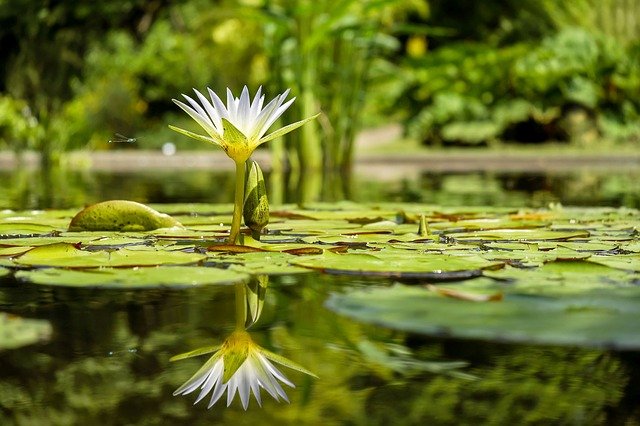Veronica Valli and Chip Somers, psychotherapists and sobriety coaches, provide a video podcast which focuses on, “How to stop drinking without feeling like you are missing out”. Both have recovered from extended substance abuse and share their knowledge, skills and life stories to help others experience recovery. Throughout the video they explore the false beliefs that lead us to maintain our level of alcohol drinking and that serve to entrench our habituated behaviour. They explore the outside influences that reinforce our false beliefs and unhelpful/unhealthy habits. Veronica and Chip offer a way forward for anyone who wants to overcome their conditioning and achieve sobriety – a road to recovery that they have used to help many hundreds of people recover and achieve a truly successful life. They also offer a Soberful podcast with more than 150 episodes incorporating success stories to help people sustain their efforts to achieve sobriety.
The power of false beliefs
Chip and Veronica point out that underpinning our habituated drinking behaviour is a set of false beliefs that influence our thoughts and emotions on a daily (even hourly) basis. These false beliefs relate to the nature of the rewards offered by alcohol drinking and the fear of exclusion through living a boring life if not drinking. The fundamental false belief is that alcohol is the passport to a promised land – the land of fun, excitement, relaxation, a sense of connection and belonging, sex and romance. The power of this belief is fuelled by our conviction that this is the desired land – the place we want to be. Associated with that is the fear that if we stop, or even reduce, our alcohol drinking we will be seen as boring and be excluded from the desired land of personal fulfillment.
External influences reinforcing false beliefs
Television advertising with its ability to create colourful and exciting scenarios portray a culture where drinking is the road to inclusion and fun. The images portrayed in advertisements entice us to sit back and relax with a drink or to party on with others who are having a good time. Some ads even focus on the pain of exclusion for those who are not part of the drinking set. Wine and beer advertising through social media, text messages and email is continuous and unrelenting, promising the ”good life” if you participate and partake. Newspapers offer special advertisements that encourage you to sign up for weekly/monthly shipments of alcohol at special discounted prices. If you happen to join a wine club, they are very ready to make you “one-off offers” that are “specially designed for you” – and they can make this very targeted by tracking your frequent purchases. A culture of drinking permeates our society and it is very difficult to break the hold of this cultural entanglement.
The road to sobriety
Both Veronica and Chip stress that the road to sobriety can be a long journey where the early stages can be quite difficult as we try to break the hold of our false beliefs and the influence of family, friends and peer group that can hold us back – sometimes with the disarming comment, “Oh come on, don’t be a bore!”
One of the primary ways that Chip highlights to begin the road to recovery is a “reality check” or what is often called “a cost/benefit analysis”. Chip insists that we face the reality of the costs of drinking alcohol for us personally and don’t downplay or overlook the negative impact on family, friends, work output, social relationships, health and wellbeing and overall productivity. Facing the reality of our lack of sobriety can be painful and entails a thorough reassessment of the reward value that we consciously or unconsciously ascribe to drinking alcohol.
Veronica focused on the need for social support to reinforce our efforts to achieve recovery. She maintains that social support is necessary to reduce the likelihood of falling back into old habits or the stop/start pattern that can develop when we go it alone. To this end, Veronica offers a Soberful Facebook group and a paid online Soberful Life Program with monthly workshops, support meetings, training videos, and podcast discussions – all facilitated by professional experts and established authors in the field of sobriety.
In her latest book, Soberful: Uncover a Sustainable, Fulfilling Life Free of Alcohol,Veronica offers other ways to begin the journey to recovery and sustain a life of sobriety. She highlights the emotional skills needed to sustain our recovery efforts and identifies effective strategies to manage the difficult emotions that we often try to avoid or numb through alcohol. She discusses in detail what she describes as the Five Pillars of Sustainable Sobriety which she identifies as movement, connection balance, process and growth (this is also offered as a free Masterclass).
Reflection
The road to sobriety is very much an individual journey and both Chip and Veronica have travelled this road over many years in their earlier lives. They have experienced the challenges, the setbacks, pressures and the big and small victories. Veronica found that journalling and meditation (undertaken over more than 20 years) have helped her to sustain her sobriety and Chip highlighted the positive influence of “expressing gratitude for what he has” as a sustaining force.
One of the ways to recovery involves a process of reflection on what “messaging” we give ourselves on a particular occasion when we chose to drink alcohol. We can review, for example, whether our behaviour was motivated by a reward mindset – just one or two drinks to reward ourselves for overcoming a difficult situation, achieving a successful outcome, celebrating an anniversary or birthday. Bringing awareness to our personal messaging helps us to identify the specific motivators that underlie our habituated behaviours.
As we grow in mindfulness through reflection, listening to podcasts, participating in workshops/programs or meditating, we can grow in self-awareness and identify the drivers behind our habits, including the habit of drinking alcohol, and develop the necessary emotional regulation to enable us to achieve a desired state of sobriety.
I have personal experience of the damaging effects of alcohol through my experience of an alcoholic father who lacked any support mechanism for his post-traumatic stress syndrome resulting from three and a half years as a prisoner-of-war in Changi. After a marriage breakup and a successful remarriage, he became a model of sobriety, giving up drinking alcohol completely, and keeping fit by walking for an hour every day.
This family history has motivated me to avoid alcoholism. However, I still feel the pressures, internal and external, to have a regular glass of wine (a variable regularity governed, to some degree, by my life circumstances at the time – such as the recent death of my brother Pat Passfield). My strategy to move towards my desired level of sobriety is to reflect on what motivates my behaviour in particular circumstances and to do a reality check covering the real cost of the occasional drink (e.g. on health and relationships).
_____________________________________
By Ron Passfield – Copyright (Creative Commons license, Attribution–Non Commercial–No Derivatives)
Disclosure: If you purchase a product through this site, I may earn a commission which will help to pay for the site, the associated Meetup group, and the resources to support the blog.







